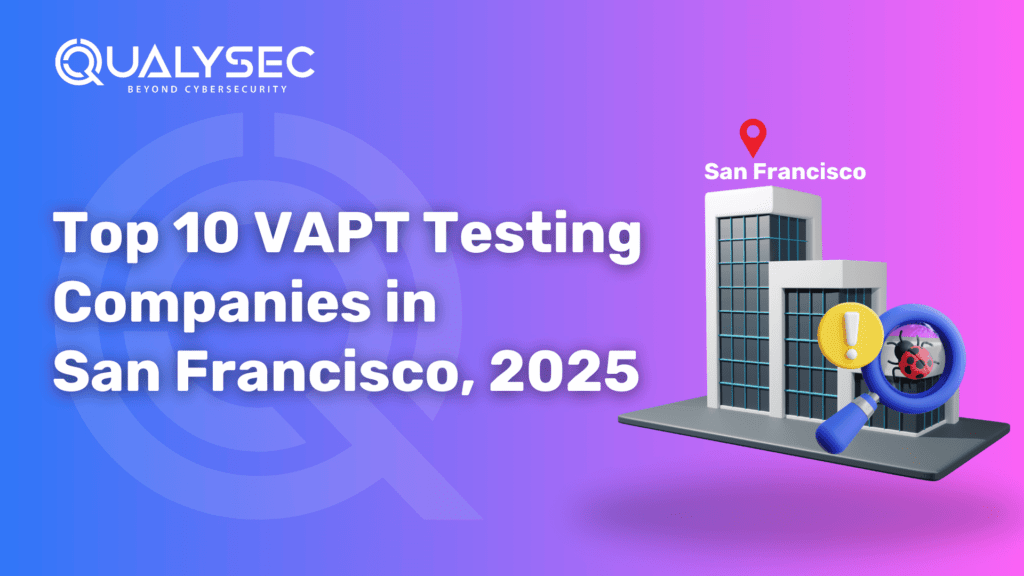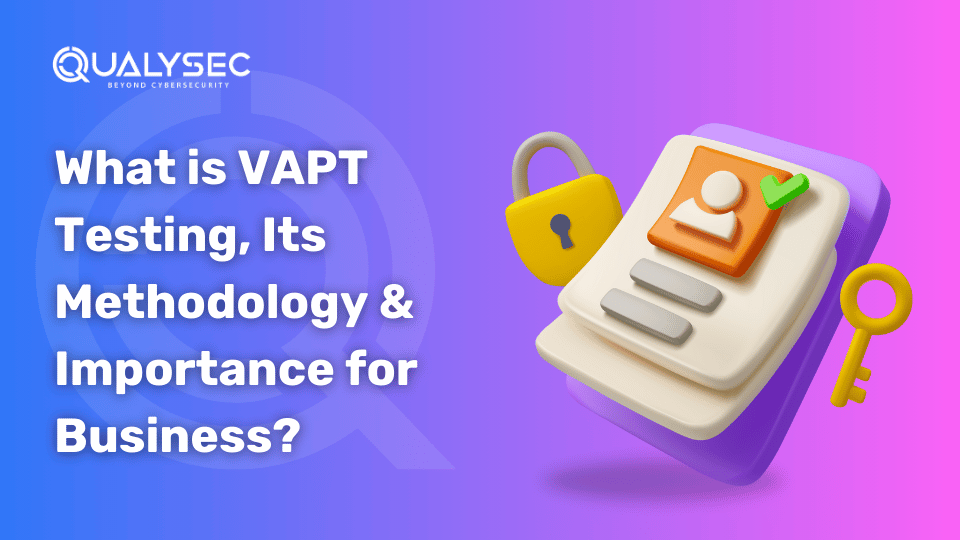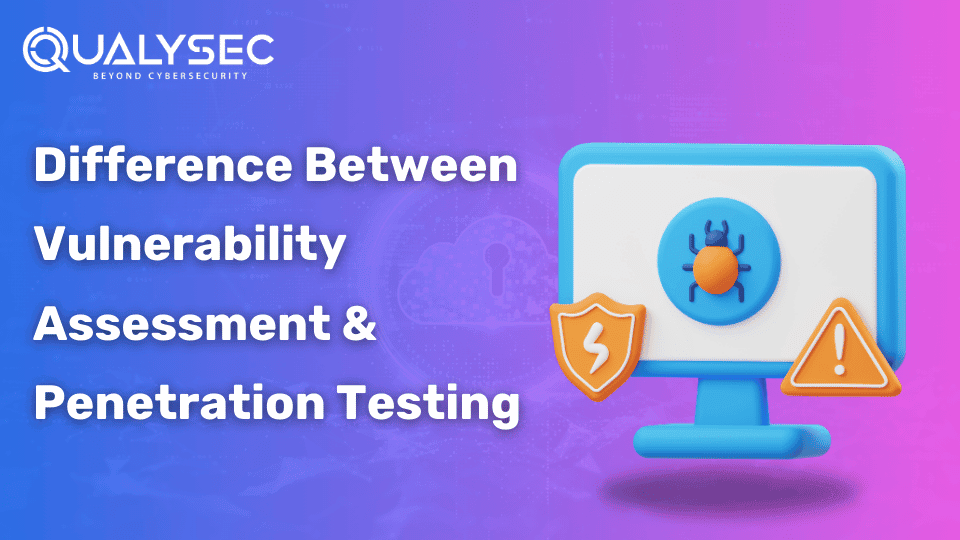Top 10 VAPT Testing Companies in San Francisco, 2025
Keeping track of the growing cyber threats is an important focus for companies toward securing their system, data, and applications in the aftermath of Vulnerability Assessment and Penetration Testing (VAPT). Cybercriminals do not throw away time; they exploit it. Such exploitations lead to financial loss and data breaches, followed by non-compliance with the norms. Thus, organizations need professional VAPT testing companies in San Francisco to identify vulnerabilities, simulate realistic cyberattacks, and provide remedial measures. San Francisco is the world’s greatest tech hub which has some of the most innovative companies dealing with penetration testing, vulnerability management, and security compliance solutions. Most of them deal with the finance, health care, SaaS, and government sectors as they keep up to date about the latest threats. This is the top 10 list of VAPT testing companies in San Francisco ranked on their expertise, innovation, and dedication towards cyber resilience. Top 10 VAPT Testing Companies in San Francisco 1. Qualysec Formation: 1999 | HQ: Foster City, CA Qualysec is one of the largest VAPT assessment and compliance companies, providing the most complete and comprehensive solutions to the security of an organization’s IT environment, which aims to make their environments more secure. Its flagship solution gives automatic assessment of vulnerabilities and penetration testing plus real-time security monitoring. Key Features Characteristics that support SIEM and DevOps workflows to support remediation of vulnerabilities. Why choose Qualysec? Talk to our Cybersecurity Expert to discuss your specific needs and how we can help your business. Schedule a Call 2. Skybox Security Established: 2002 | Headquarter: San Francisco, CA Skybox Security is the top organization that provides the solution for finding vulnerabilities and giving priority to risk security. This provides the IT environment with complete forms of protection through robust risk-based vulnerability management. Key Features Detection of vulnerabilities across all networked, application, and cloud environments; risk prioritization, which involves monitoring automated compliance. The Skybox Vulnerability Control platform helps organizations actively mitigate cyber risk. Real-time visibility into the network, its configuration, as well as vulnerabilities and the attack surface. Why Skybox Security? Proactive Risk Management: This would mean identifying prospective vulnerabilities before their being exploited. Visibility and control: Most businesses have intricate infrastructures. For businesses like this, Skybox gives network, cloud, and on-premises visibility, making it important. Trusted by finance, healthcare, and manufacturing, Skybox makes sure that organizations reduce their risk exposure. 3. Cobalt Founded in: 2013 | Headquartered in: San Francisco, CA Cobalt is the newest provider of vulnerability scanning software available on-demand to continue network security expert services. Cobalt was designed to deliver continuous security testing with actionable insight in real-time toward threats. Core features PTaaS through ethical hackers using a global network Continuous penetration testing is done based on web applications, APIs, and cloud environment Attacks are scheduled in the physical world. Distinctive pricing remedy from start-up to enterprise-level. Why choose Cobalt? On-demand Penetration Testing: Customers buy tests upon their own due time through customer-friendly dashboard. A global community of penetration testers Access to the world’s most advanced white hackers that are willing to engage in the battleground of live testing. Solutions responsive to start-ups and enterprises Cobalt delivers this quick but fluid security testing in the shortest period. 4. TruAdvantage Founded: 2010 | Headquartered in: San Francisco, CA TruAdvantage Cybersecurity is a firm that provides detailed solutions in vapt scan, network security, and compliance. The company specializes in niche areas like health care and finance. It has fully assessed the risks involving all of its sensitive data and systems. Key features All-round security solution for your cyber security needs Network Security and Penetration Testing Focused areas HIPAA and PCI-DSS HIPAA and PCI-DSS healthcare and financial service security compliance expert Risk assessment and remediations customized to any client’s requirement Security Audit and Remediation: Identify the weaknesses and remediate weak security systems in place. Why Choose TruAdvantage Focused health care and financial service specializations that ensure a customized approach toward achieving or surpassing regulation compliance. We offer vulnerability scanning to compliance consulting end-to-end, best fit for business trading in a very regulated space. Partner with experts known to put customers first through customizable solutions, ensuring a balance between security and compliance 5. Parachute Technology Year of Founding: 2003| Headquarters San Francisco, CA Parachute Technology is a provider to businesses in finance and health care, among others, with excellent security assessments as well as remediation services regarding operating in network security and VAPT testing. Key Services Network Penetration Testing: This identifies the presence of vulnerabilities on both wired and wireless networks. Cloud Security Assessment: It is specifically done for the multi-cloud environment of organizations. Cybersecurity services, which range from threat hunting, vulnerability management, and incident response, provide end-to-end protection. Custom security consulting is uniquely tailored for small to medium-sized businesses. Why Choose Parachute Technology? A full-service company: Provide the entire gamut of cybersecurity services, from penetration testing to cloud security and incident response. Trusted by finance, SaaS, and government companies due to its custom solutions that have quick turnaround times. Known worldwide for exceptional customer service and being cognizant of the needs of small and medium-sized businesses. 6. Varsity Technologies Founded: 1997 | Based: San Francisco, CA Varsity Technologies is a managed IT services company offering managed cybersecurity. Some of the services they provide to education and nonprofit clients include penetration testing, security audits, and cloud security assessments. Key Points Penetration testing and network security assessment to education, health care, and non-profit organizations. IT Management for ensuring that the cybersecurity is well aligned with business-wide general strategy on IT. Risk and Vulnerability remediation with emphasis on compliance Cloud Security in business migrations to hybrid cloud environments. Why Choose Varsity Technologies? Domain-based knowledge: This service is specifically for education and non-profit industries, which will have unique compliance regulations. Managed IT services: It brings an all-rounded approach towards cyber security through IT infrastructure. Varsity Technologies is renowned for highly customized, flexible solutions to meet every business need. 7. Snap Tech IT Founded: 2007 | Headquartered in: San Francisco, CA Snap






